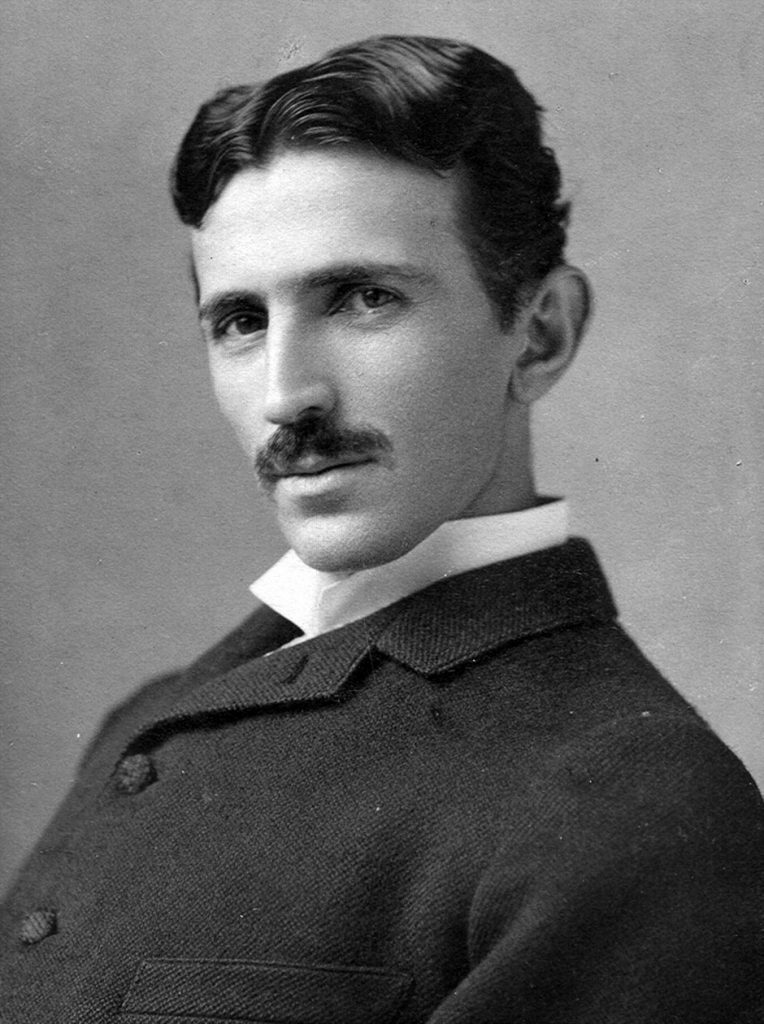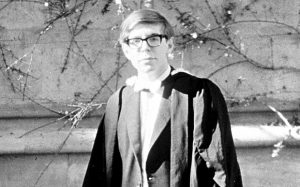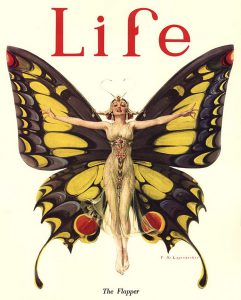The flash of a lightning bolt is one of nature’s most powerful phenomena. It also is a great metaphor for the mind of Nikola Tesla, the brilliant electrical engineer, inventor, and futurist. His work to improve generator designs and create better components for electrical systems culminated in a battle with one of America’s greatest inventors, Thomas Edison. Tesla challenged Edison in a conflict now remembered as the War of the Currents. Today, AC power is the standard for our electric grid; it is cheap, relatively safe, and can be used for everything from heating our homes to making ice. However, there was a time when the general belief was that AC power was neither safe nor practical. Some people thought DC power would be better for homes. In the War of the Currents, the supporters of these two competing concepts clashed.
The war started when two groups with two incomparable electrical systems began competing for municipal contracts to set up power grids to deliver electricity to homes. Edison directed his company to create a power system that utilized DC power. The Edison used his marketing experience to push for this system to become the standard for homes and businesses. His main competitor was financier George Westinghouse. He employed Tesla and put his ideas into practical use allowing millions of American homes to be wired for AC current. There could only be one winner. America was going to be powered by either DC current or AC current, and there was a lot at stake. It was not just a battle about electricity, but it was also about the future of America and the advances in technology that would build the 21st-century world.1
Nikola Tesla was born to Serbian parents on the night of July 10, 1856 in what is now Croatia. According to legend, he was born during a powerful thunderstorm, a fortuitous omen as electricity defines the work of Tesla’s life.2 Tesla, a math prodigy, displayed his talents at an early age. With his eidetic memory, Tesla could visualize objects in his mind with great detail. He could construct models without having to draw them out.3 These two abilities served him well throughout his life. Initially, his father wanted him to become a priest but, he relented when the young Tesla fell ill and was possibly on his deathbed. The elder Tesla promised to allow his son to study math and engineering in school; whether it had an effect or not, the young boy quickly recovered soon after. After completing his schooling, Tesla went on to pursue a job with a company on the leading edge of electric power.

Tesla joined Edison’s world when he took a job at the Continental Edison Company in Paris. Already displaying an aptitude for electrical engineering, Tesla’s talents were quickly recognized by his superiors, and he immigrated to the United States to take a job in the Edison Machine Works in New York City.4 Working for Edison’s company was a great opportunity for Tesla. At the time, Edison’s electric company was wiring cities for electric power to light the streets at night. Tesla’s began by working to improve the DC generators that supplied power to the system; later his supervisors tasked him with improving the arc lighting system they were installing. The arc lights were powered by AC current but could only be used outdoors for safety reasons. Tesla completed the work asked of him by manager Charles Batchelor, but Batchelor refused to pay Tesla promised bonuses for accomplishing the work. This resulted in Tesla’s departure from the Edison Machine Works, but he did not leave empty handed.5
Tesla’s experience at the Edison Machine Works was just the beginning of his troubles. His work at the company included designing a better arc lighting system, which the company declined to file a patent on. After he left, Tesla was able to claim the patent rights and put the system into production himself. This was a fortunate break for Tesla as he would be able to use the patents to attract investors. This lead to the formation of the Tesla Electric Light & Manufacturing Company. However, this venture did not go as well as Tesla had hoped. Tesla signed over his patent rights in exchange for stock in the company, a seemingly good deal at the time. Powered by his new technology, the company should have taken off, but this was not the case. Investors backed away from the dangerous arc lights and no one was interested in the AC motors Tesla had developed. The company folded and Tesla had nothing to show for it. He was left digging ditches for two dollars a day. Tesla was at the lowest point in his life.6

This set back was only temporary, better days were on the horizon for Tesla. Salvation arrived when he was contacted by investors looking to profit from newly patented technologies. The first two men that helped Tesla get back on the right track were Alfred Brown and Charles Peck. They had experience taking people’s inventions and setting up companies to profit from them. They worked with Tesla and gave him a chance to develop and perfect his AC motors. Tesla’s work captured the attention of George Westinghouse who was working on an AC power system that was competing with Edison’s DC system. Westinghouse looked at Edison’s DC system and quickly realized it had a flaw. Even though Edison’s system was safer because of the low voltage, the process of transmitting the power over long distances was not practical. The DC system worked well in crowded urban centers like New York or Philadelphia, but bringing power to rural communities would present a challenge with Edison’s system. Westinghouse capitalized on this shortcoming by promoting an AC power system to bring electricity to smaller communities further away from the power plants producing the electricity. Edison was not going to back down in the face of this new competition. The War of the Currents had begun.7

The battle for which electric system would power America would last just a few short years. However, the influence it exerted changed the future of technology in America. In 1888, an electric line worker in New York City died while doing a repair on the AC lines that were powering the arc light system in the city. Edison jumped on this opportunity. He fanned the anti-AC furor that grew out of the worker’s death. Edison even secretly hired a man named Harold P. Brown to travel to cities and put on public demonstrations where animals were killed by electrocuting them with AC current to show the public how dangerous it was. The most memorable contribution to come from Edison during this campaign was the invention of a new method of execution for condemned prisoners, the electric chair. Edison was personally against the death penalty, however this did not stop him from secretly financing the development of the electric chair. Edison hoped that using AC generators would further influence public opinion against AC current. The first executions did not go well resulting in a lack of the negative publicity that Edison desired.8

The War of the Currents would end by 1893. In the closing years of the nineteenth century, plans were being made for a huge celebration of the past and a glorious look at the future. The city of Chicago wanted to use electricity to illuminate the World’s Fair it was hosting. The World’s Columbian Exhibition was to be a celebration of the 400th anniversary of Christopher Columbus’ landing in North America. However, in the tradition of World’s Fairs the exhibition also displayed new technologies that were going to be introduced to the public in the near future. One of the new technologies to be showcased at the Fair was electric lighting. Westinghouse won the contract to rig the lighting for the fair, his bid being substantially lower than Edison’s bid. The DC power system was just too costly to implement, even for something as small as a fair. The publicity for AC power would be huge. For once, the public could see the wonders of the AC system that Tesla helped to develop. Even though Edison’s DC system was safer, it could not compete with the cost-effectiveness of the AC system , especially in rural communities where the power had to be transmitted over longer distances. Once Westinghouse started winning numerous bids because of the lower cost involved in producing and transporting AC power Edison could no longer compete, and Westinghouse and the AC system would become the power of the future for the world. Tesla’s final victory would come when Edison was forced to merge with a different competitor and formed the General Electric Company.9
- Michael Parks, “Tesla, Edison, and the War of Currents,” Tech Directions #78, no. 2 (October 1, 2018): 12. ↵
- Richard Munson, Tesla: Inventor of the Modern (Norton & Company, Incorporated, W.W., 2018), 10. ↵
- Christopher Cooper and Marc J. Seifer, The Truth about Tesla: The Myth of the Lone Genius in the History of Innovation (New York: Race Point Publishing, 2018), 23-24. ↵
- John J. O’Neill, Prodigal Genius: The Life of Nikola Tesla (Ives Washburn 1944), 57-60. ↵
- W. Bernard Carlson, Tesla: Inventor of the Electrical Age (Princeton: Princeton University Press, 2013), 62-70. ↵
- Christopher Cooper and Marc J. Seifer, The Truth about Tesla: The Myth of the Lone Genius in the History of Innovation (New York: Race Point Publishing, 2018), 35-36. ↵
- W. Bernard Carlson, Tesla: Inventor of the Electrical Age (Princeton: Princeton University Press, 2013), 72-76. ↵
- Mark Essig, Edison and the Electric Chair: A Story of Light and Death (New York: Bloomsbury Publishing USA 2009), 137-140. ↵
- Richard Gunderman, “The Extraordinary Life of Nikola Tesla,” Smithsonian.com, January 05, 2018. ↵



47 comments
Mauro Bustamante
I neither heard any relationship between Edison and Tesla nor got something to know more about Tesla.This article is great! The history of Tesla is always interesting and very complex, but the way it is exposed in this article makes it much smooth to understand. Tesla’s inventions are responsible for how our electricity grids are setup and know one talks about it. In addition, I enjoy how the competition of the two investors led to this great “war” and debate. This article is great! The history of Tesla is always interesting and very complex, it actually taught me something interesting and new. His story of going through a troubling phase is inspirational to learn about.
Rinnu Joy
This article is well written. The history of Tesla and the hard work behind it to bring it up to this success is well written in chronologically that it is easy to understand. I have heard about Edison and also learned about him. But I neither heard any relationship between Edison and Tesla nor got something to know more about Tesla. Tesla is something that is foreseen way ahead. Congratulations for the great work and effort put in this article.
Mia Correa
This article was an engaging one! I thought it was really cool to read about Edison and Tesla and their differences. The fact that Teslas career path totally shifted when he got ill is insane considering what he ended up becoming in the end and what amazing tasks and things he accomplished. I think Teslas past is a lesson to all. I think Teslas past resembles perseverance. Things may not go as planned, but there is a plan. Just keep swimming.
Rahni Hingoranee
Well written article! I have actually otherwise never heard of the War of Currents and I find that the relationship between Tesla and Edison intriguing, specifically. Learning about Tesla’s bright history of growing up as an intelligent and joyful person was interesting and especially how he became even more successful in the future. His story of going through a troubling phase is inspirational to learn about.
Alexander Avina
This was a very interesting and captivating article. I actually learned a lot that I was unaware of before. The background about Tesla was very intriguing to me and thought that it was summarized very well. The article kept me interested the whole time and I thought that the piece, as a whole, was very well-written. I thought you did a wonderful job in capturing the essence of the battle between Edison and Tesla without adding unnecessary information. I am really glad that I came across this article because it actually taught me something interesting and new.
Pablo Ruiz
Wow! I found this article very interesting in how it highlights just how important Tesla’s inventions have been for our society. We all have learned about Edison but never about Tesla. He is responsible for how our electricity grids are setup and know one talks about it. In addition, i enjoy how the competition of the two investors led to this great “war” and debate. Even with Edison’s attempt to slander the AC method it still made headway and would become our accepted method. As a kid my father told me how Tesla had an idea to create an infinite source of energy. A source that would not cause pollution and was very effective. Till this day i still wonder if its true or not but hearing about this story displays how much Tesla’s ideas were suppressed and forgotten. It very well could be true and it would sad and shocking if an idea that would change the world was forgotten and died with Tesla.
Jose Chaman
This article is great! The history of Tesla is always interesting and very complex, but the way it is exposed in this article makes it much smooth to understand. Something I did not know before was that Tesla was headed to be a priest when his was a kid and because of his illness all his future changed! The rivalry between Edison and Tesla has always been a good topic for discussion, but clearly Tesla had designed a better way to bring energy to the cities. Tesla is not only a historical character, but all the lights that illuminate us today.
Edith Santos Sevilla
I had no idea what the War of the Currents was, and this article really helped me to understand the basis of it. The description of the competition between Tesla and Edison is very well written and informative. Besides giving the information it was fun to read, it gives details of the life that Tesla led and that ultimately ended up in the creation of what is today. What I found really interesting was how the competition led to the creation of the electric chair, even with Edison being against it. It shows how he was focused on the business perspective and he wanted to be in advantage. Tesla also took the opportunities that were presented, and it is what led to him following his dream of electric engineering even against his father’s wishes. Overall I learned a lot from this article and congrats to the author, who did a great job explaining.
Emmanuel Diaz
Interesting to read about how the rise of tesla began and how Edison tried to bring the downfall from competition. Though without the competition there would be no motivation for advancement but still to read how tesla worked for Edison’s company and actually made an impact to go unnoticed shows how the company would function for those with opportunities. I also enjoyed how they spoke upon Tesla’s low point because it shows the reality of working hard and wanting to achieve success. “Success” is not a straight road and may not lead you there the first time either. Also seeing how quickly Edison was to try and throw dirt on Tesla’s inventions and work by hiring someone to show the public what his “work” could do shows not competition but the fear that Edison had about someone being able to surpass him in his own work. The article was very informative and did a great job in teaching me about a side of Tesla I did not know about.
Andrea Degollado
I found this article extremely interesting and informative. Of course we have all heard of Edison but, personally, I had never heard the rivalry between Tesla and Edison. I found it extremely interesting that their rivalry resulted in the creation of the electric chair. This article also presents us with background information about Tesla and how his life was like. I found the detail about his father wanting him to be a priest extremely interesting. This article also helped us understand the great impact Tesla has had in our modern world.